Lecture Notes and Short Texts in Principles of Microeconomics
The introductory first chapter from the textbook "Microeconomics in Words" is available free through this link. From the publisher's web site, "This book demystifies microeconomic analyses by showing how they depend on simplifying assumptions and ethical judgments that could be made differently. [...] To make the material more accessible and to provide context for the ideas, the book adopts a word-based rather than mathematical approach and uses many examples from literary classics." The book is freely available in digital form from libraries that subscribe to Oxford Scholarship Online.
The Carbon Tax Center provides an explanation and justification of the carbon tax proposal, which includes useful detail on the general working of Pigovian and 'green' taxes with greenhouse gas emissions as a topical application. The site includes a presentational slide show and short non-technical papers (with supporting links) comparing the tax with market-based (tradable-quota) alternatives, giving evidence for its demand-reducing effects and explaining how its adverse distributional effects could be addressed. Offers subscription to email newsletter.
Free online course with six hours of material, with materials downloadable in a variety of formats. This module looks at the production of t-shirts as an example of a supply chain, considering how value is added and how countries benefit to different extents.
This is a short guide for beginning students to five different kinds of elasticity: Price Elasticity of Demand, Price Elasticity of Supply, Income Elasticity of Demand, Cross Price Elasticity of Demand and Arc Elasticity. Links to the individual pages are to the right of the main article.
This is a set of hyperlinked mindmaps, including textual notes, images and hyperlinks, starting with Economic Environment of business. Reading the files requires the free MindManager viewer software, which is available for a variety of platforms. Previews of a couple of mind maps are available as PDFs, with reduced functionality.
A complete online course, adapted from a course delivered on-campus at MIT in the Spring of 2018. It includes a set of lecture videos, assigned readings, problem sets with the solutions explained in videos, and an exam. The course assumes a high-school knowledge of calculus and covers the principles of consumer behaviour, firm behaviour, market structure and policy relevance.
The Economics Briefs document of The Economist's site includes short introductions to six ideas: Akerlof's Market for Lemons, Minsky's Financial Cycle, the Stolper-Samelson Theorem, the Keynesian Multiplier, the Nash equilibrium, and the Mundell-Fleming Trilemma.
An introduction to microeconomics in the form of 114 cartoon-style video lessons, averaging 8 minutes long, divided into ten chapters. Watching the videos, reading the full text transcripts, or taking the self-test multi-choice quizzes, requires registration on the site. The authors are named in each section.
This blog ran from 2012 to 2015, in which Prof. Arvan answers questions from students about Microeconomics (Principles or Intermediate). Posts are organised by date and by topic.
Marsh is a Professor of Public Policy. These documents are collections of topical opinion pieces from his blog and can be viewed online or downloaded as PDF. Topics include "Is a little Economics dangerous?", "Economics after the Crash", "Economics and Policy", and "The Problem of Housing Supply."
Economystified was a blog, updated weekly from December 2010 to the Summer of 2014. Each post discusses an economic issue, an economist, or a principle of economic theory, aimed at a lay audience.
PDF notes and questions from an introductory course taught in 2007. Thirteen files have a total of ninety pages of text and diagrams.
These three sets of worksheets were produced by an Economics Network mini-project. Each consists of a three documents in .doc format. A four-side student handout includes the case study and questions. The other documents are a sheet of answer guidelines and a four-side teaching guide. The topics are "Supermarkets under scrutiny", "Argos/Littlewoods Price fixing Agreement" and "Football shirts: A case of Unfair Competition" Permission is given for unrestricted educational use and alteration.
These are the outputs of a mini-project funded by the Economics Network, in which the first-year students at Ulster were given a minimum of lectures, with most teaching time given to Problem-Based Learning. Seven worksheets for PBL tasks are archived on this page, along with a guide sheet for teaching assistants on how to run a PBL meeting and an advice handout to students on How To Keep a Personal Development Report. The final report from the project is also available. The course was based on the Begg textbook, to which the worksheets refer.
Definitions and short explanations of a variety of microeconomic terms and principles, including some graphs. This site has been created to support revision of AS-level Economics. The link is to the Archive.org copy of the site.
Definitions and short explanations of a variety of Market Failure-related terms and principles, including some graphs. This site has been created to support revision of AS-level Economics. This link is to Archive.org's copy of the site.
This course website includes exams (with solutions) and lecture notes, both in .pdf format. It supports a course on Economic Theory 101 as taught by Stefano DellaVigna of University of California, Berkeley, in 2004.
This course on Microeconomics covers individuals, firms, markets, and industries, including the topics of consumer demand, production, cost, market structures, and factor markets. Included are 20 lessons on microeconomic basics, broken up into small chunks of text. The AmosWorld site also includes a glossary and an online testing system, to which this material is linked.
A complete book of nearly 900 pages, dating from 1993, with contributions from authors including Thomas Sargent, Joseph Stiglitz, Thomas Schelling, Paul Krugman, and N. Greg Mankiw. The structure covers basic topics, areas of application and ends with some short biographies of economists.
A collection of short, accessible articles introducing economic concepts including economic efficiency, tariffs, arc elasticity, externalities, and efficiency wages. Authors include Jodi Beggs (Northeastern University) and Mike Moffat (Richard Ivey School of Business).

